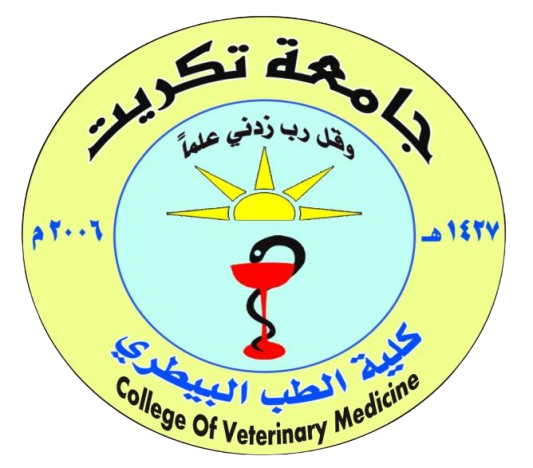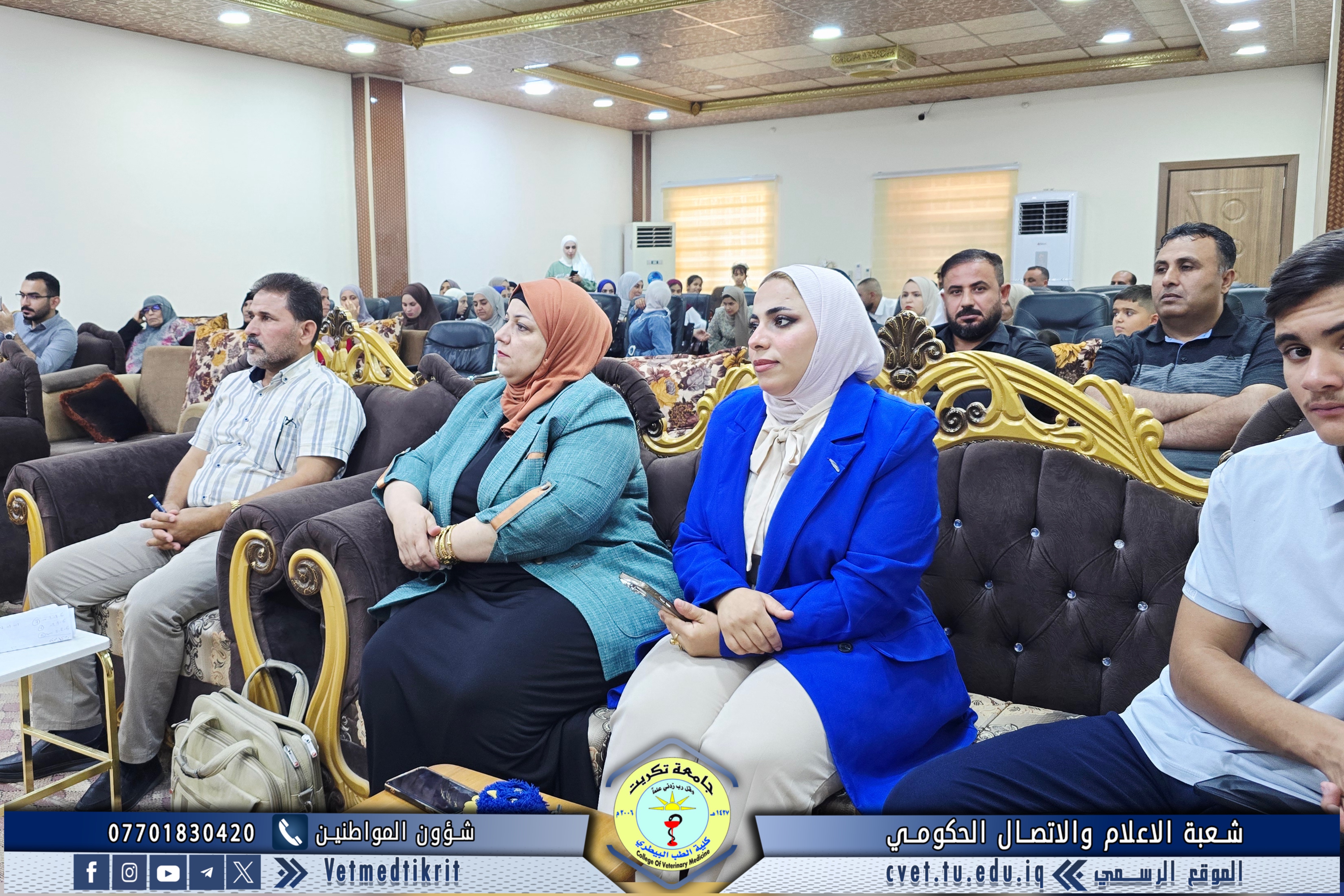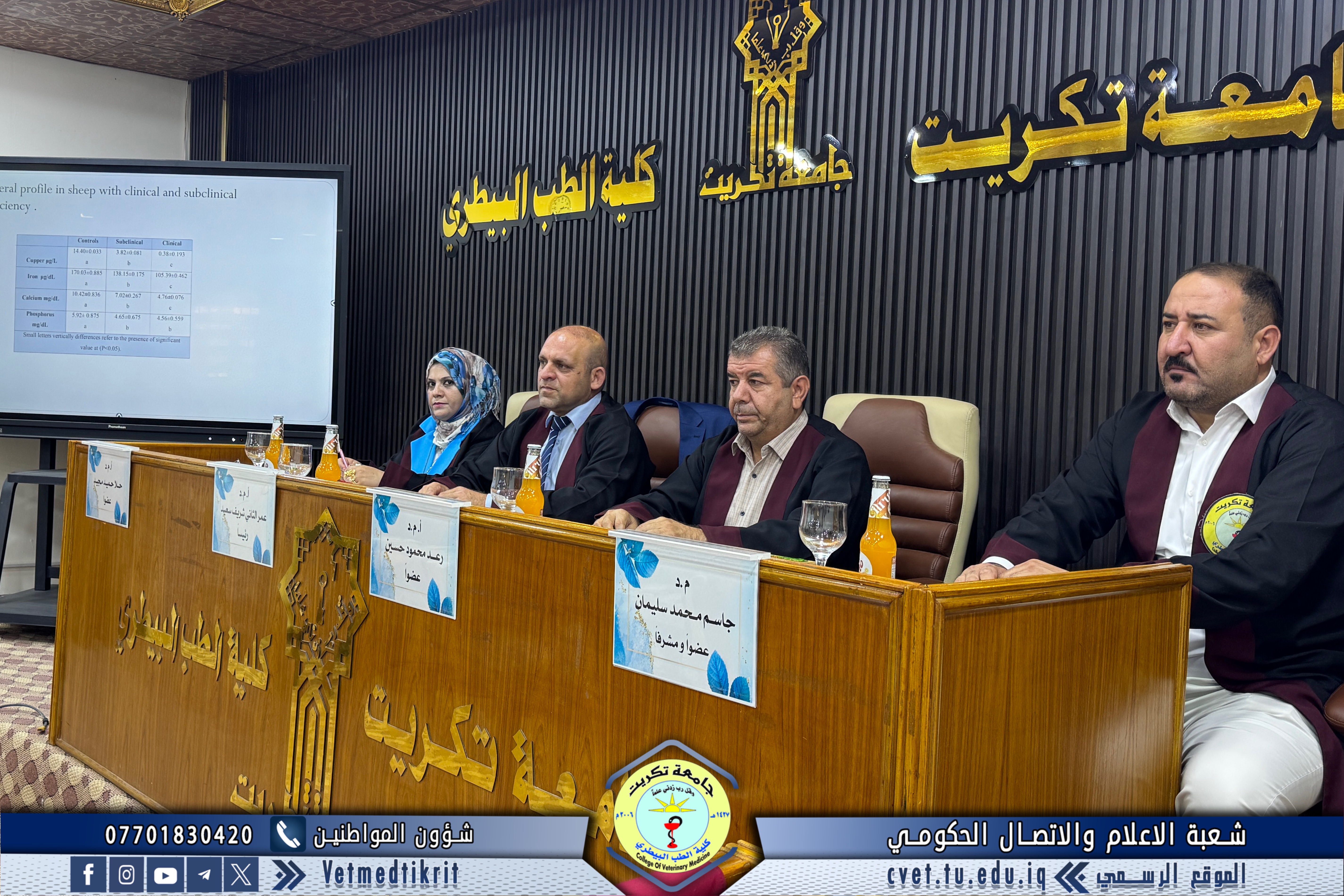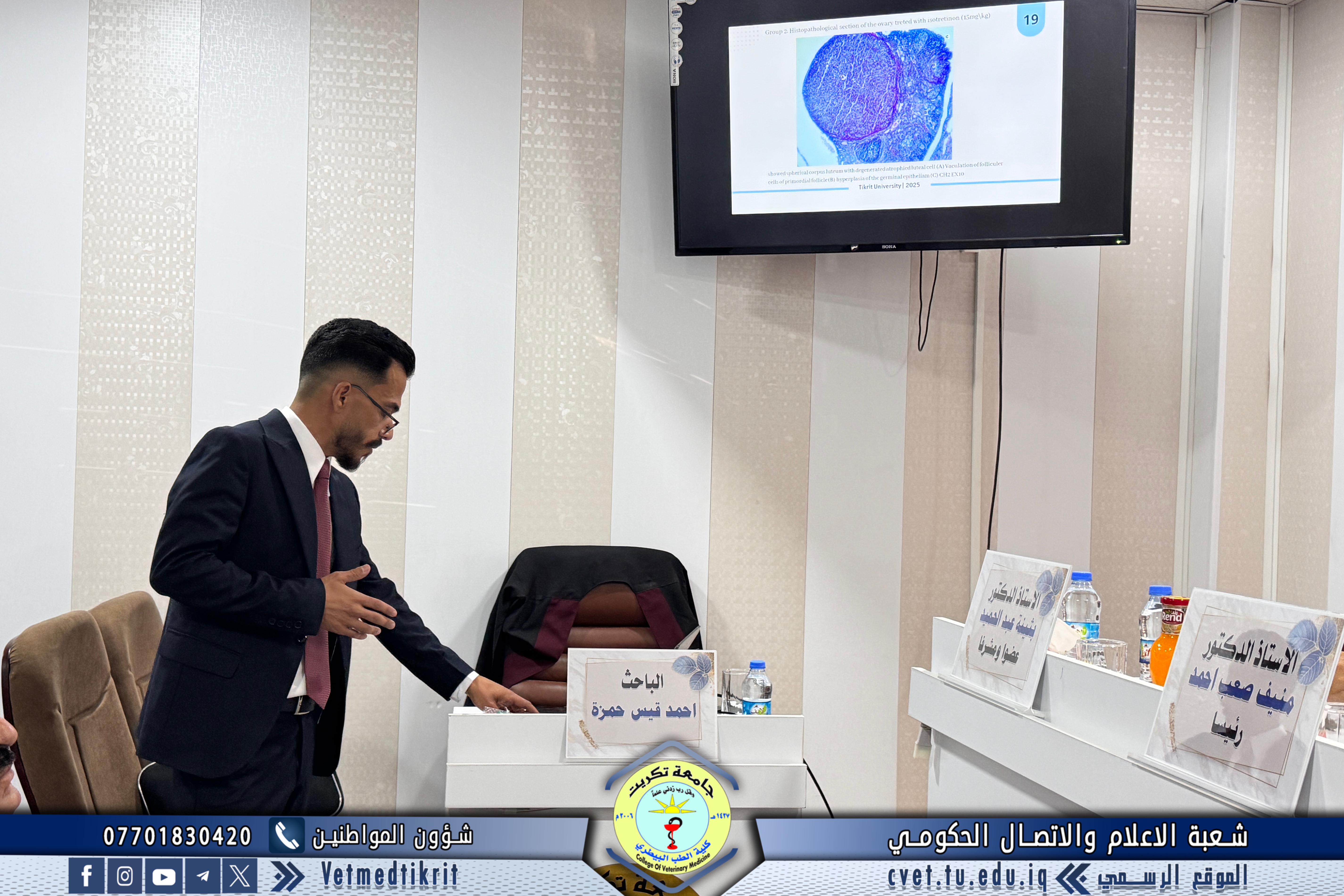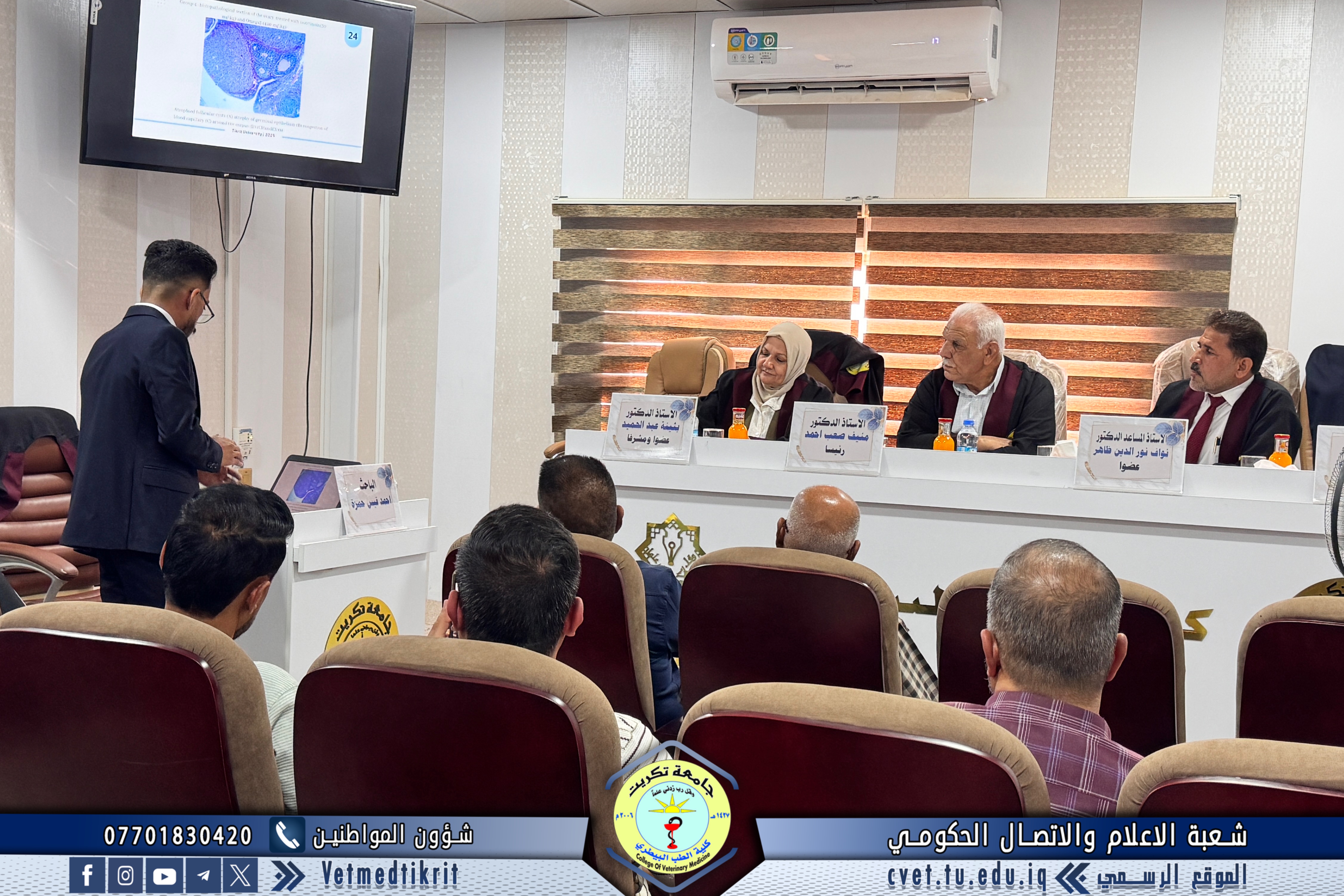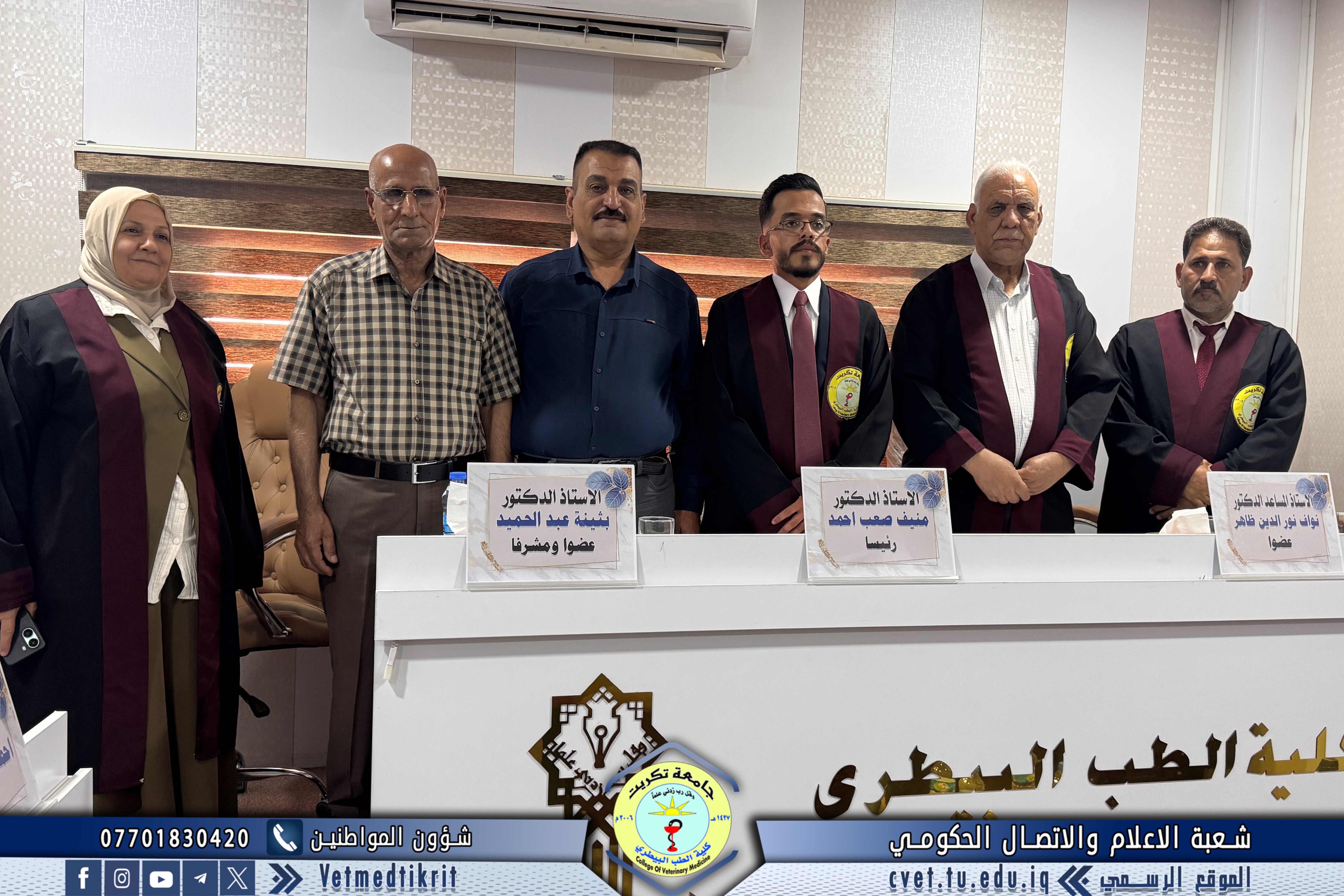With the grace of Allah, the College of Veterinary Medicine at the University of Tikrit held the defense of a Master’s thesis entitled: “Virulence Factor Markers of Pseudomonas aeruginosa Isolated from Clinical Samples of Infected Animals and Humans in Kirkuk Province” by the student Khadija Maher Salloum, specializing in Microbiology.
The examining committee consisted of:
-
Prof. Dr. Bashar Sadiq Noami / Immunology and Bacterial Diagnostics / College of Veterinary Medicine – University of Tikrit / Chair
-
Prof. Dr. Sabah Mohammed Saleh / Microbiology / College of Dentistry – University of Kirkuk / Member
-
Lect. Dr. Raghad Ziyad Suleiman / Life Sciences / College of Veterinary Medicine – University of Tikrit / Member
-
Prof. Dr. Nihad Abdulhussein Jaafar / Bacteriology / College of Veterinary Medicine – University of Tikrit / Member and Supervisor
Thesis Abstract:
Samples for this study were collected from public hospitals and private clinics in Kirkuk Province between August 2023 and May 2024. The research aimed to determine the prevalence of certain virulence genes of Pseudomonas aeruginosa using molecular methods, and to investigate their relationship with infection sources, as well as the antimicrobial resistance patterns of these isolates.
A total of 42 clinical samples from human and animal sources were obtained, distributed as follows: 81% from human sources (41% wound swabs, 32% urinary tract infections, 26% ear swabs), and 19% from animals (ear swabs from cats). The bacterium was most frequently isolated from wound infections. Regarding sex distribution, P. aeruginosa was slightly more common in males (53%) than in females (47%).
The bacterium was identified through Gram staining, morphological characteristics on blood, MacConkey, and nutrient agar, positive oxidase and catalase tests, and confirmed molecularly by PCR detection of the OprL gene.
Antibiotic susceptibility testing showed the highest resistance to Tobramycin (43%), followed by Meropenem and Imipenem (38%), Ciprofloxacin (36%), and Amikacin (34%). The isolates were most sensitive to Piperacillin/Tazobactam (5%) and Ceftazidime (21%).
Molecular analysis of virulence genes using PCR revealed the following prevalence:
-
OprL: 100% of isolates (used as a confirmation marker)
-
ToxA: 67% overall (76% in human isolates: 64% wounds, 78% ear infections, 91% UTIs; 25% in animal isolates)
-
AlgD: 33% overall (26% in human isolates: 36% wounds, 33% ear infections, 9% UTIs; 63% in animal isolates)
-
LasB: 81% overall (76% in human isolates: 79% wounds, 78% ear infections, 73% UTIs; 100% in animal isolates)
-
ExoS: 64% overall (68% in human isolates: 57% wounds, 78% ear infections, 73% UTIs; 50% in animal isolates)
-
PilA: 36% overall (44% in human isolates: 50% wounds, 33% ear infections, 45% UTIs; absent in animal isolates)
Statistical analysis indicated a significant association only between the ToxA gene and infection types, while no statistically significant correlations were found between other virulence genes and clinical sources.
The defense, held in Dr. Muhannad Maher Hall at the College of Veterinary Medicine, was attended by faculty members and a gathering of students.
